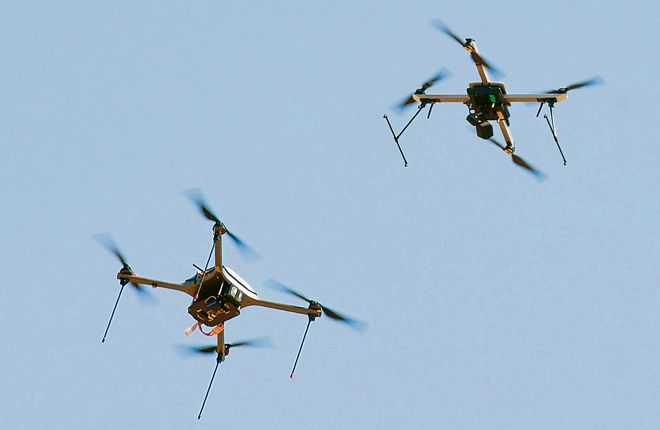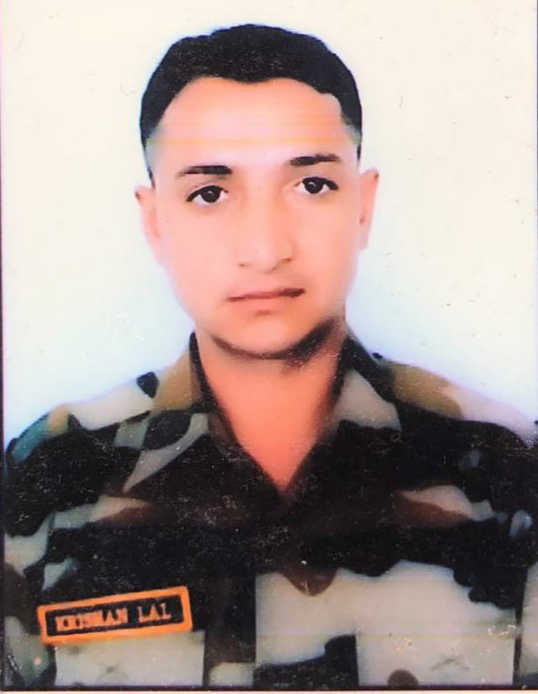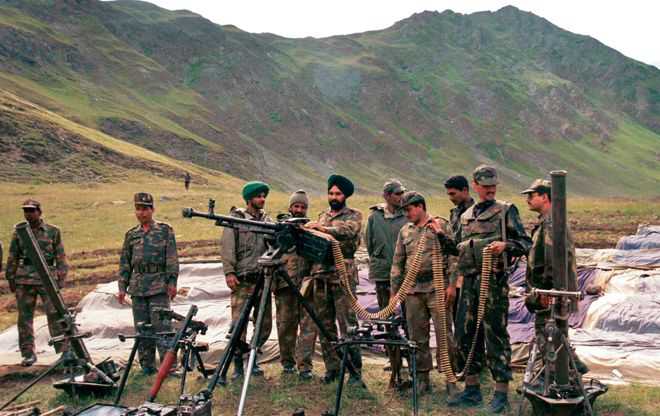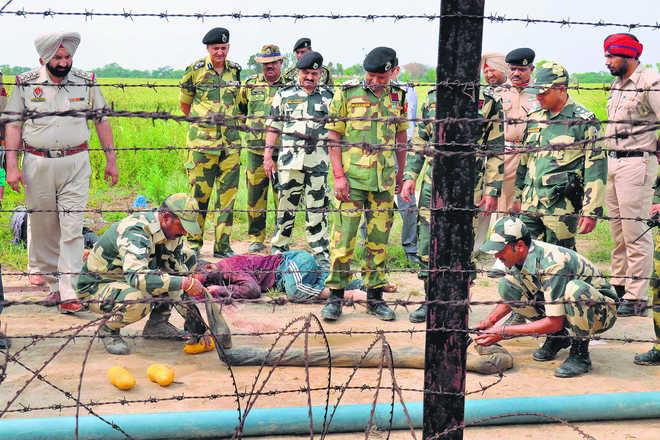Drones with 10-kg payloads were used by Pakistan’s intelligence agencies to AK-47 rifles, counterfeit currency and narcotics at Tarn Taran. Unmanned aerial vehicles (UAVs) or drones are among the major growing technologies that have beneficial applications in security and other logistical employment, but at the same time, they are being misused by terrorists and smugglers.

RK Arora
Counter-terror analyst
The drone technology is a double-edged sword. To the utter shock of the Indian security agencies, Chinese-made drones with 10-kg payloads were used by Pakistan’s intelligence agencies to drop AK-47 rifles, counterfeit currency and narcotics at Tarn Taran in Punjab. The arms and ammunition were dropped by drones that came from across the Pakistan border in 10 sorties spanning over eight days. The aim was to carry out 26/11-like terror attacks in Punjab and Jammu and Kashmir.
This dangerous plan was revealed when the Punjab police seized a drone during its probe into the weapons seizure. The Punjab police recovered this drone, which used to drop arms and ammunition in Punjab, on the basis of information provided by the Khalistan Zindabad Force (KZF) terrorists arrested from Tarn Taran on September 22. An attempt was made by the terrorists to burn the drone.
Punjab Chief Minister, Captain Amarinder Singh, has urged the Central Government to alert the Air Force and the Border Security Force about the possibility of drones being used to supply weapons from across the border. He also requested Union Home Minister Amit Shah to handle the drone problem at the earliest. He tweeted, “Recent incidents of Pakistan-origin drones dropping consignments of arms and ammunition is a new and serious dimension on Pakistan’s sinister designs in the aftermath of the abrogation of Article 370.” This is a serious issue which needs to be thoroughly investigated. Actually, unmanned aerial vehicles (UAVs) or drones are among the major growing technologies that have many beneficial applications in security and other logistical employment, but at the same time, they can pose a significant threat to the very purpose for which they were invented. The Punjab incident is an example of this challenge. The use of UAVs was started with the beginning of the Cold War by the superpowers for the purpose of security and surveillance.
Irrespective of the rising popularity of UAVs among the civilian population, combined with expanding technological capabilities, there are significant challenges to regulating the use of UAVs. These challenges can be placed into three broad categories. First, where should UAVs be allowed — or not allowed — to fly? This includes the difficulty in identifying the proper airspace for the different uses and sizes of UAVs.
The second problem is about who should be allowed to use UAVs — and more specifically, who is responsible for damages from drone use. As UAVs increase in physical size and technical capability, the level of skill required to operate them safely has increased. Due to its smaller size, made of plastic body and use of electric batteries, it is nearly impossible to detect drones by conventional radars. Traditionally, radar technologies are used to detect flying objects in the sky, but technologies are often not suitable in this case. The reason is simple: for many years, radar technology and software was specifically made to avoid small objects, such as birds, and view them as noise. Most commercial drones are constructed of plastic and are difficult to detect electronically because of their small size. They also fly low in relation to the ground.
All these factors make it a favourite tool for carrying out terrorist and other illegal activities.
Unlike military drones that can cost more and look like small aeroplanes, small-use drones can be obtained for a few hundred dollars. Criminals have used drones to drop drugs into prisons. Mexican smugglers have flown them above the border to spy on the movement of patrolling federal officers. The dreaded terrorist organisation, ISIS, used them to drop crude bombs on American and allied forces in Iraq and Syria.
Although the Director-General of Civil Aviation (DGCA) has recently notified certain clauses in the context of the use of UAVs, there are gaps in appreciation and understanding regarding the use of UAVs, among other security agencies. Registration of drones remains a problem and even more problematic will be the UAVs which are smuggled into India whose identification and accountability will always pose a challenge for security agencies.
The long-term solution to identification of UAVs can be by manufacturing drones indigenously. But the main concern remains the easy availability of knowhow and simple technology which make it a preferred tool for terrorists and other anti-national elements. The real threat would emanate from UAVs operated by criminal-minded individuals with the intention of causing harm to vital and security installations. It will be difficult to control them as not only could the toy UAVs be modified, but drones could also be made out of components using ‘do-it-yourself’ kits. UAVs could easily be innovated from commonly available material in combination with electronic components. In such an unregulated environment, the potential of this threat is still to be fully appreciated by the security agencies.
The India-Pakistan border is one of the most dangerous borders of the world. I had argued in an article that “Pakistan-based drug syndicates may now adopt the measures of their Mexican counterparts with the construction of elaborate and sophisticated tunnels underneath India-Pakistan border along with the use of drones to circumvent India’s border security infrastructure. Worst of all, in any future war with Pakistan, the metastasizing nexus of criminality and terrorism will create a second front for India’s security forces. Given the sophisticated nature of the threat, the only way to effectively secure India’s border with Pakistan from drug trafficking and weapons smuggling is to conceptualise and put in place an omni-directional border security with a mix of air and underground detection system.”
Now, there should be no doubt that drones can be used by smugglers to keep a watch on border guards and their positions so that at an appropriate opportunity, they can smuggle their consignment. Terrorists and smugglers are beginning to employ UAVs for transporting their logistical and surveillance needs by modifying the UAVs for carrying payload so that these can deliver across the border without any physical hindrance. The biggest question now is: how well are our border guarding forces prepared in face of this new emerging threat? Till now, their tactical planning and obstacle system was based on ‘man-oriented negotiation’ of land-based boundary, but this new tool has now made military strategists and policy planners scratch their heads in dealing with the new security threat from drones.





















































































































